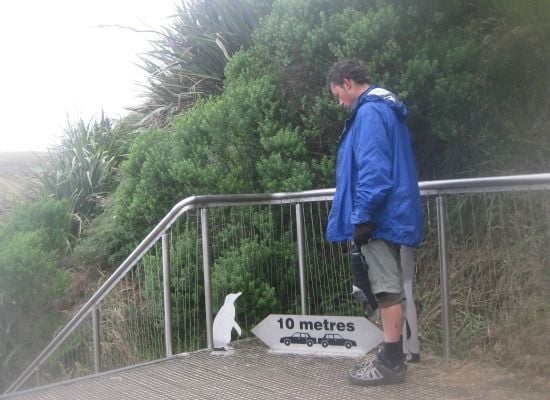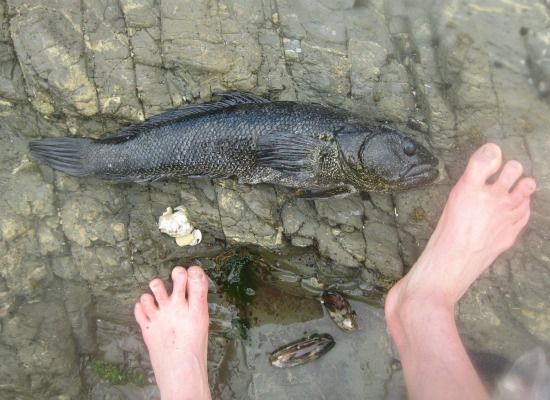Halfway to the Bottom of the Earth: The Catlins
To see this place on a globe, home of the world’s southernmost tapas reastaurant, one must lift it upward to expose the underbelly of the planet
/https://tf-cmsv2-smithsonianmag-media.s3.amazonaws.com/filer/20120223105050CurioBaySMALL.jpg)
Some residents of Christchurch may feel the world has forgotten them in their tremulous days of earthquake-related stress and recovery. But another part of New Zealand has hardly been discovered: the green hills, thick forests and southernmost Kiwi coastline of the Catlins. To even see this place on a globe, one must lift it upward to expose the underbelly of the planet, and a northerner like me who ventures down here may get the prickly, precarious feeling that, should he trip or falter too near the shore, he might fall off the bottom of the Earth.
A main claim to fame of the Catlins is the area’s high latitude. Slope Point is the southernmost spot of land on the South Island, at 46 degrees, 40 minutes south. Oh, come on, now. Don’t raise your eyebrows and whistle like that. Seattle, for example, boasts a latitude of 47 degrees, and Glasgow goes just under 56 degrees. Yet I’ll grant that the Catlins are farther south than Tasmania, than Cape Town and than most cities in South America. This is, indeed, among the southernmost settled areas on the planet.
As I zeroed in, the world grew quiet. Sheep became more populous and people scarcer, and the abandoned dairy houses and community halls I passed, all locked up and grown over with weeds, looked like prime ghost habitat. My 3G internet connection petered out and died at about 46 degrees, 20 minutes south, and I was left frightfully alone in a world where even climbers at the top of Everest can send text messages to their mothers. I entered the region’s large town, Gore, and though it is heralded as the “brown trout capital of the world,” Gore had evidently seen better days. Almost no one was out and about. On its main drag, many businesses appeared shuttered, and defunct relics of infrastructure along the train tracks told of a livelier economic era that had withered.
In the village of Waimahaka, in spite of an auto garage, a school and a “community centre,” I saw not a soul, though—like an old cliché borrowed from a film—a radio happened to be playing that saddest song of the homeless drifter, “Lodi,” by Creedence Clearwater Revival. Several miles later, I caught a scent of the sea on a cool breeze. The hills, as green as the sky was gray, reminded me of coastal Scotland. So did the names printed on mailboxes, like Holmes, Heaps and Airlie, Buckingham, McPherson and Alcock. Sheep by the thousands grazed in the fields along the roads, but I saw nobody tending them. Over a hill came my first glance of the Southern Ocean—that brutal unbroken circumglobal ring of churning waters that had been generating icy headwinds for days. I hit the coast at Fortrose, a salty village of shacks decorated with clam and abalone shells. I immediately dug up several dozen cockles from the sandy bay and packed them away for dinner, and along the highway I bought all my vegetables from honesty boxes—and not until I entered the campground in Curio Bay that night did I speak to someone, a man named Geoff from Yorkshire on his way to Dunedin to seek out several long-lost cousins who emigrated to New Zealand in the 1950s and, subsequently, might as well have vanished into thin air.
I walked to the beach just after sunrise, and there on the rocks, standing tall and handsome and all suited up, were my first wild penguins. Called hoiho in the Maori language, the yellow-eyed penguin is said to be the rarest in the world. I came to within about 30 feet from the oblivious birds, which, like so many creatures here, evolved without predators and without fear. The federal government has even imposed a legal approach limit of 10 meters to protect the naïve birds, for one could probably walk up to one and carry it away.

At midday I collected a limit of 50 mussels and cooked half on the beach near the Cathedral Caves, saving the rest for dinner. I had been sleeping for free whenever possible but that evening paid $14 for a campsite in Pounawea. In a heavy drizzle at dawn, I pedaled 35 kilometers to Balclutha, where I stayed at the country cottage of two friends who live in the outskirts. One of them, Chris Muggeridge, is a transplanted chef from the North Island and, with business partner Daniel Hauser, recently opened a tapas restaurant called Hause Made on Balclutha’s main drag at 55 Clyde Street. Locals, Muggeridge says, have been cautious but inquisitive about these flavorful things called “tapas” and while Christmastime brought some business, many guests “were asking where the steaks were,” Muggeridge says. For this is beef and mutton country, and small plates of spicy, aromatic Mediterranean-influenced food is an exotic novelty here—way, way down here at 46-plus degrees south. Muggeridge and Hauser even believe their restaurant might be the southernmost tapas joint on Earth.
I rode my bike to Kaka Point one afternoon to collect mussels at low tide, and in a deeper pool, as I looked for abalone, I saw the tail of a large fish nestled in a crevice. A moment later, lying on my belly, I had it pinned and spent about 60 seconds with both arms in the water, my head half submerged, skirmishing with the struggling animal to get a grip in its mouth. Finally, I emerged with a thrashing fish nearly two feet long with a head like a toad’s and vacant eyes as black as a Patagonian toothfish‘s. I flipped through my New Zealand ocean regulations booklet; the fish, near as I could deem, was a legal catch, so I dispatched it. On my way home, I stopped at Hause Made so Muggeridge could have a look. “It’s what we call ‘rock cod’,” he said—though we failed later that night through Internet searches to pinpoint the creature’s Latin name, which is what really counts in the murky seafood world of “cod,” “sea bass,” “snapper,” and so much other generic nomenclature.
Adventures will continue as surely as my wheels roll, but, sadly, I must start north for Christchurch, for I am at that point in my journey where the days left can be counted on two hands. How I cursed those blustery Antarctic southerlies for days as I came south—but those same gales may soon be my dearest friend as I ascend northward, over the face of the Earth, climbing the parallels like rungs of a ladder, into the latitudes of people, dependable Internet access and a selection of tapas bars.

/https://tf-cmsv2-smithsonianmag-media.s3.amazonaws.com/accounts/headshot/Off-Road-alastair-bland-240.jpg)
/https://tf-cmsv2-smithsonianmag-media.s3.amazonaws.com/accounts/headshot/Off-Road-alastair-bland-240.jpg)